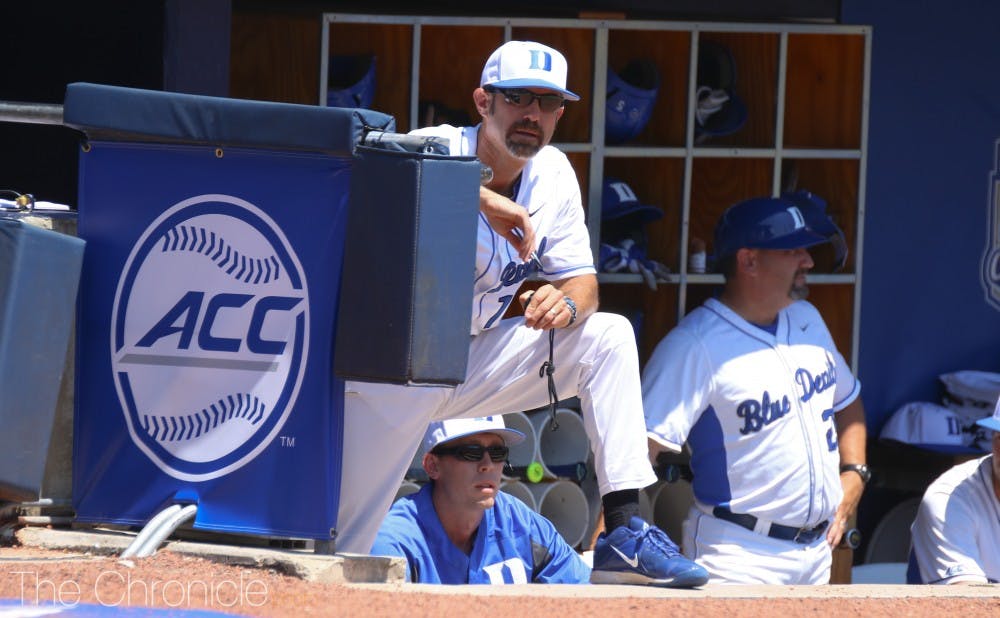“Moneyball: The Art of Winning an Unfair Game,” the 2003 book by Michael Lewis that was adapted into a 2011 Oscar-nominated film, brought the use of advanced statistics in professional baseball into national prominence. Since then, sabermetrics have trickled down to the college game as well.
In “Moneyball,” Oakland Athletics General Manager Billy Beane compiled a successful roster in spite of the Athletics’ limited financial resources by using advanced statistics. Beane went on a crusade to convince every member of the organization to buy into assessing players by their statistical performance and not the proverbial eye test.
Although sabermetrics were met with trepidation initially in big-league front offices, Beane’s ways are now ubiquitous in player evaluation throughout professional baseball. Every MLB team employs some sort of analytics department, and there is a great deal of data accessible to such experts, including nearly limitless access to a player’s performance in every count and Statcast, a highly advanced tool that measures players’ every move.
But it has taken a while for the movement to gain a foothold at lower levels due to the insufficiency of data-driven resources, causing a lack of depth and breadth in statistical evaluation. The college baseball season is only about a third of the length of the major-league season, resulting in too small of a sample size to show true correlation, and most college teams lack the finances to employ full-time statisticians to give their squads a competitive edge.
Despite the lesser volume of data that Duke has access to in comparison to that of many of the MLB teams who use sabermetrics religiously, head coach Chris Pollard still sees more in-depth statistics as having a key role for his squad.
“I believe in analytics. I believe in making decisions based on science and what it can tell you. We try to embrace technology in our program, not only in our player development, but also in terms of using it as a metric to evaluate guys,” Pollard said. “It’s been proven very poignantly and vividly over the past five years in the game of baseball at all levels that offense and in particular run production is not predicted by just batting average.”
Although Pollard’s embrace of sabermetrics seems to be a positive step in terms of using a data-driven approach to player evaluation, there is a distinction between theory and execution. A number of amateur coaches recognize that analytics more accurately assess a player’s value, but those tools are rarely used due to a lack of accessible statistics.
Perhaps the most comprehensive offensive tool used in professional baseball is wRC+. This statistic, created by FanGraphs, is calculated by using a complex formula that attempts to measure a player’s run production, adjusting to numerous factors such as stadiums’ run-producing environments and the current offensive state of the game, and scales in comparison to the league average.
Because of the obvious infeasibility of a measure of this kind being implemented at a college level, teams like Duke need to get creative in their statistical assessments.
“In lieu of batting average, we talk a lot about what we call a team at-bat average or a quality at-bat average. We call them TABS—that is the ability to go up to the plate and do something to keep the train moving,” Pollard said. “Maybe it’s a sacrifice, hit and run, moving a runner into scoring position, or an extended at bat that forced the pitcher to throw a lot of pitches. These can be things that may not necessarily show up in OPS, on base percentage or slugging percentage, but are still important keys to pushing runs across the plate.”
TABS provides a unique intersection between a sabermetric approach—it is a data-driven approach to assessing a player’s performance—and a more traditional take. TABS still values tactics neglected by a majority of sabermetric measures, such as sacrifices and hit and runs.
Pollard’s willingness to heed to both traditional and innovative approaches is a good omen for the Duke program—the team has a leader who has neither dug his heels into his prior ways nor jumped at declaring any new sabermetric idea the new evaluative gold standard for his team.
“Ultimately, a good offense isn’t one that hits .330 or gets a certain amount of stolen bases, but one that scores a lot of runs,” Pollard said. “That’s why you do those things: to score runs.”
Get The Chronicle straight to your inbox
Signup for our weekly newsletter. Cancel at any time.

